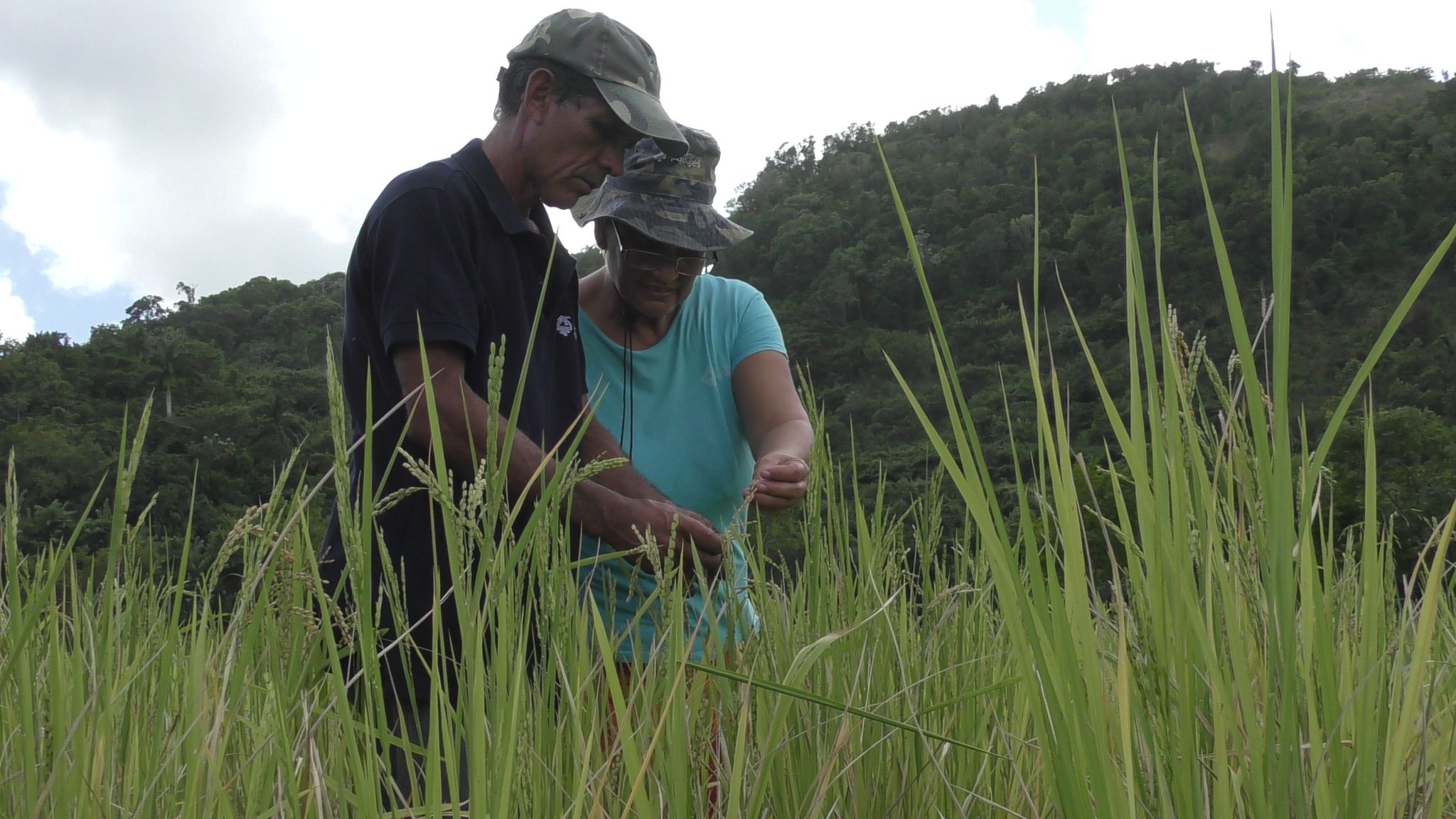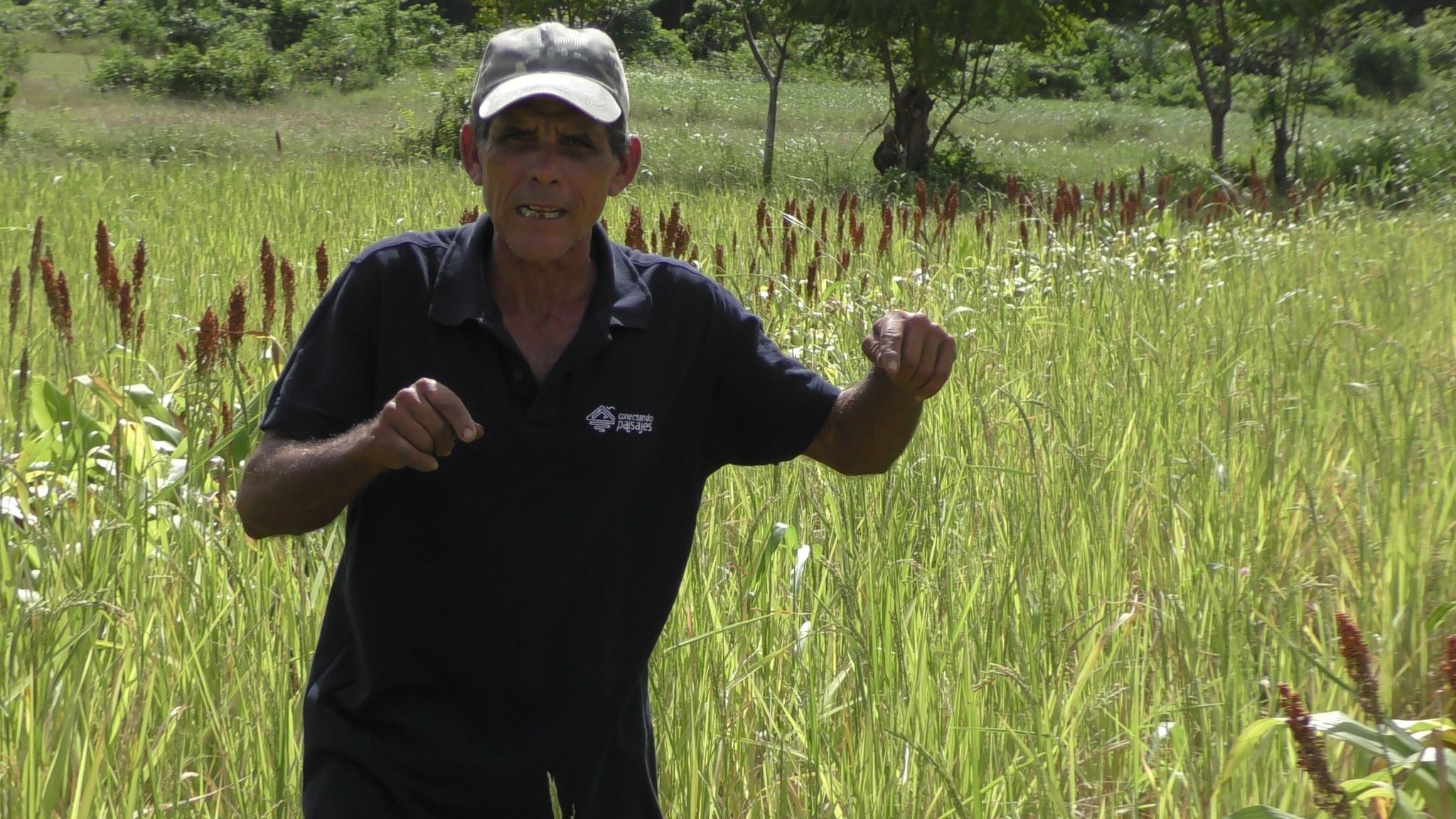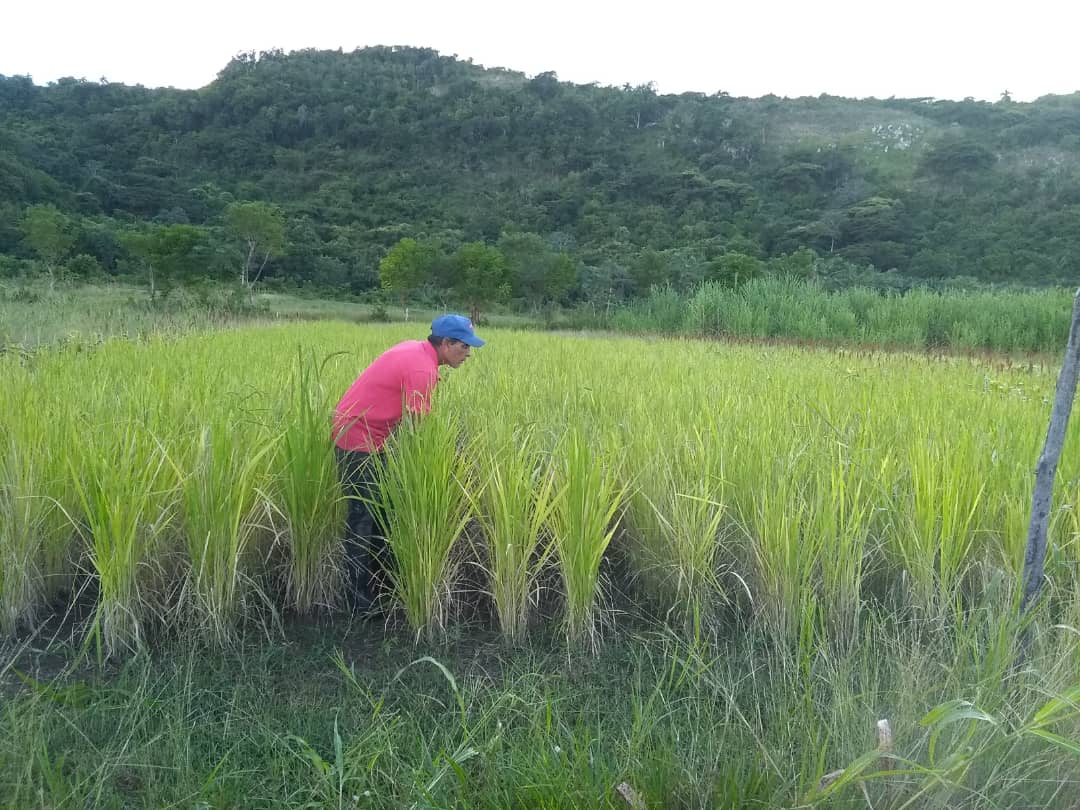
The probabilities of growing rice in mountain agroecosystems ―in dry conditions and facing the effects of climate change― are confirmed in the municipality of Chambas, Ciego de Ávila, after applying scientific and innovative methods, with the advice of research centers and the local university.
Osveldo Gómez Reina, producer of the Manuel Montaña Credit and Services Cooperative, located in Chambas, explained that from relations with the "Sur del Jíbaro" Grain Experimental Station, in the province of Sancti Spíritus, they incorporated five varieties of cereal (IACuba 31, 39 and 47; one of Line 4953 and Bolito).
He specified that the plantations are in the flag leaf phase (beginning to spike), which allows evaluating their behavior and establishing comparisons to determine which species are best adapted to the conditions of that relief.
They also take as a reference the experiment carried out around four years ago with Bolito, which indicated a yield of three quintals per string ―up to six or seven can be obtained―, however, after milling it averaged between 70 and 75 pounds of grain. , results that demonstrated the feasibility.

Associated with international projects such as “Conectando Paisajes” and “Agrecocaribe”, recently completed and promoters of sustainable agriculture, Gómez Reina assured that he cultivates organic rice, a category endorsed by the use of animal traction and the use of crop residues to prepare the soil.
He added that it is based on the use of efficient microorganisms, with hormonal properties that favor the growth and development of plants, in addition to improving the quality of the soil.
The also professor of the Agronomy career at the Chambas Municipal University Center, valued the benefits of healthy food and the possibility of reducing the consumption of energy carriers, taking into account that they harvest in conditions of extreme drought, lacking sources of energy water supply; they depend on occasional rains.

In the same area, located on the slopes of the elevations, the rice varieties are delimited by furrows with sorghum, a plant that contributes to the dissociation of pests that are harmful to cereal crops and to the restoration of soils, in addition to resisting drought and adapt to climate change, he explained.
Likewise, he said, it prevents erosion by forming strips, makes it easier to obtain up to three harvests, constitutes an alternative source for animal feed, and the remains of harvests improve the quality of the land for other crops.
Rincón Los Hondones, with the category of School Farm with a Landscape Focus, awarded to six producing units in the country by Conectando Paisajes, responds to that essence by constituting a scenario for scientific research on rice and other crops, which became final exercises for students of Agronomy.
Gómez Reina emphasized that they work in order to train professionals with a different vision of agriculture, which will allow them to adapt to the conditions of climate change and develop productions in adverse conditions, so that economic, social and environmental interests are combined.

From that Agroecological Farm, a condition conferred by movements of the National Associations of Small Farmers and of Agricultural and Forestry Technicians, he reiterated the will to strengthen alliances with research centers to incorporate new technologies and productive procedures into the training of students.
Conectando Paisajes recognized this farm as the most outstanding in meeting the objectives of the project, after eight years of intervention in four mountainous massifs in the country: Guaniguanico, Guamuhaya, Nipe-Sagua-Baracoa and Bamburanao, the latter, a space in Rincón Los Hondones.
María del Carmen Olivera Isern, provincial coordinator of this international initiative, valued the ability to link the rest of the producers in the area to agroecological practices, so that the desired connectivity between the productive areas and the mountainous ecosystem is achieved, favorable for the conservation of the environment.




